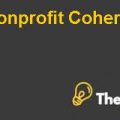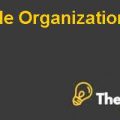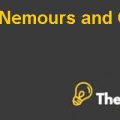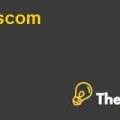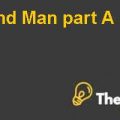
Calculation for Alternative 3:
As in alternative 3, opportunity of outsourcing Bradley is availed and the current production at full capacity is increased to the level of 180000 brochures, the revenue in this scenario is calculated by multiplying 180000 by at a typical price of 0.17. Variable costs are obtained by multiplying 150000 with different values per unit moreover, in this scenario the cost of 30000 by Bradley is also taken into account. Variable cost for sales is multiplied by 180000 as now Johnson will have to pay sales costs for the additional 30000 units. Fixed cost has remained the same for all the four alternatives. Contribution margin for this alternative is 17,400 while the units produced were 180000.
| Outsourcing | |
| Revenue | 30,600 |
| Variable Cost | |
| Direct Material | 6,000 |
| Direct labor | 1,500 |
| Overhead | 1,500 |
| Sales | 1,800 |
| Total Variable Cost | 10,800 |
| Cost of Outsourcing | 2,400 |
| Contribution Margin | 17,400 |
| Fixed Cost | |
| Direct Labor | 3,000 |
| Overhead | 3,375 |
| Sales | 1,875 |
| Corporate | 3,750 |
| Total Fixed Cost | 12,000 |
| Total Operating Income | 5,400 |
Calculation for Alternative 4:
As in alternative 4, both opportunities are availed and the current production is increased to the level of 180000 but 25000 of these units are sold to Abbie Jenkins at $8 for 100 brochures. The revenue in this scenario is calculated by multiplying 155000 at a typical price of $17 for 100 brochures and 25000 by $8 for 100 brochures. Variable costs are obtained by multiplying 150000 with different values per unit moreover, in this scenario the cost of 30000 by Bradley is also taken into account. Variable cost for sales is multiplied by 155000 as now Johnson will have to pay sales cost for the additional 5000 units and Johnson will not be required to pay variable sales cost for 25000 units that are being directly sold to Jenkins. Fixed cost has remained constant for all the four alternatives. Contribution margin for this alternative is 15,900 while the units produced were 180000.
| If both are accepted | |
| Revenue | 28,850 |
| Variable Cost | |
| Direct Material | 6,000 |
| Direct labor | 1,500 |
| Overhead | 1,500 |
| Sales | 1,550 |
| Total Variable Cost | 10,550 |
| 2,400 | |
| Contribution Margin | 15,900 |
| Fixed Cost | |
| Direct Labor | 3,000 |
| Overhead | 3,375 |
| Sales | 1,875 |
| Corporate | 3,750 |
| Total Fixed Cost | 12,000 |
| Total Operating Income | 3,900 |
DECISION
The above analysis can be summarized in the following table:
| Normal Operating Conditions | Special Order | Outsourcing | If both are accepted | |
| Total Contribution Margin | 15,000 | 13,500 | 17,400 | 15,900 |
| Contribution Margin per unit | 0.10 | 0.09 | 0.10 | 0.09 |
| Total Operating Income | 3,000 | 1,500 | 5,400 | 3,900 |
If the outsourcing opportunity is accepted then it canbe said that alternative 3 has the highest amount of total contribution margin and total operating income. The per unit contribution margin is same for alternative 1 and 3. Thus it is recommended for FinePrint to accept the outsourcing opportunity from Bradley. However, the above analysis suggests that accepting the special order from Jenkins will not be profitable in any of the case whether FinePrint fulfill the special order by their own facility or by using the outsourcing option.....................................
This is just a sample partial case solution. Please place the order on the website to order your own originally done case solution.

